Conference by Jordan Toullec – Biological Carbon Pump during the Ice-Edge Arctic Phytoplankton Bloom
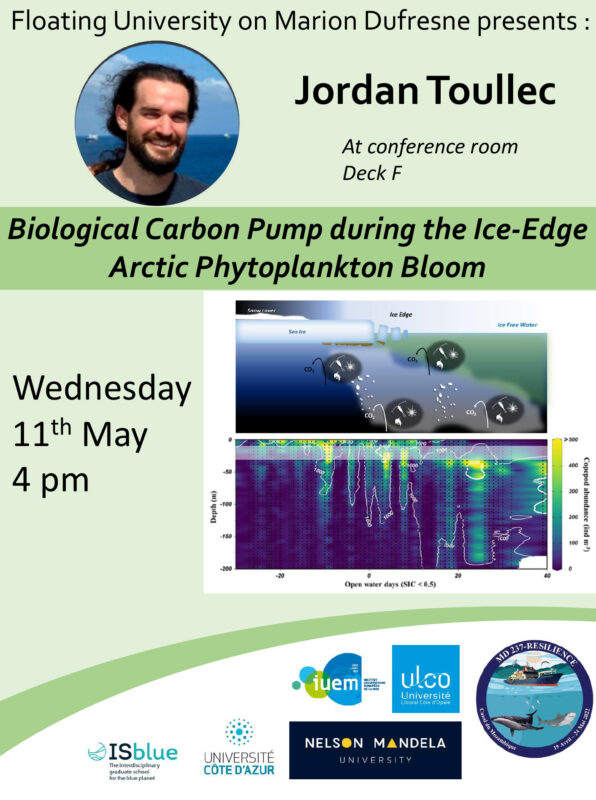
May 11th, 2022, R/V Marion Dufresne, off the South African coast
Authors:
Jordan Toullec is an early career researcher at the Laboratoire d’Océanologie et de Géosciences (LOG) in Wimereux (France), and works on the influence of plankton on the biological carbon pump. His PhD focused on the biological pump of carbon during phytoplankton bloom at the edge of the Arctic sea ice (Baffin Bay) as well as on copepod/diatom interactions and particle export (marine snow and fecal pellets) associated with them.
The biological pump, illustrated in the figure below, is a process of carbon export to the deep water or in the sediments. The carbon dioxide (CO2) fixed by phytoplankton is transferred to the different trophic compartments (zooplankton and fish). Detritus such as fecal pellets and aggregates will sediment in the water column. Paradoxically, these detritus are the focus of Jordan’s study, while others focus on the organisms themselves. These detritus may contain living cells that then become a food source for mesopelagic organisms further down. The detritus also contains biominerals (opal and calcite), which are the siliceous and calcareous shells produced by certain phytoplanktonic organisms and which are thus exported to the depths by a vertical flow of particles. In addition to this, the biological pump of carbon is modulated by zooplankton which carries out nycthemeral migrations (daily migrations from the depths to the surface and vice versa) and thus brings the detritus as well as the CO2 thanks to the respiration directly to the depth.

Figure 1 : Schematic illustration of the biological carbon pump.
The data used in Jordan’s research were collected during the Green Edge oceanographic campaign in Baffin Bay. Because of its high latitudes, the Arctic is a special case study. Indeed, phytoplankton bloom is strongly conditioned by light intensity, making blooms intense but short. When light penetrates the ice, ice algae proliferate giving rise to a bloom both under the ice and inside the ice (left figure below). Then, as the sea ice surface melts, the ice phytoplankton sediment.
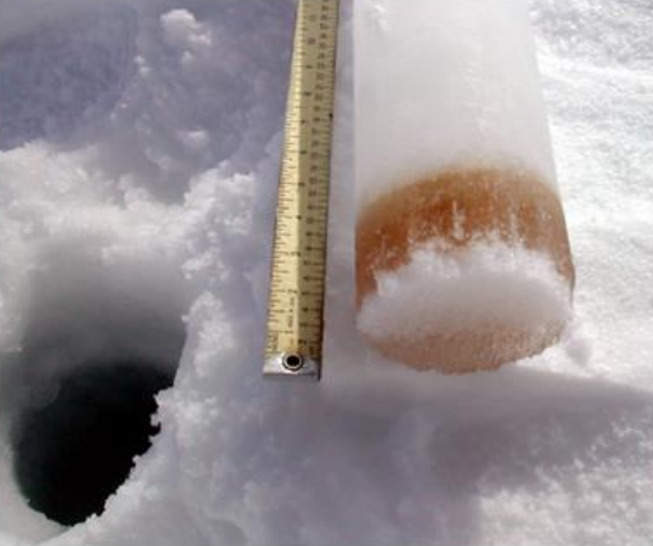
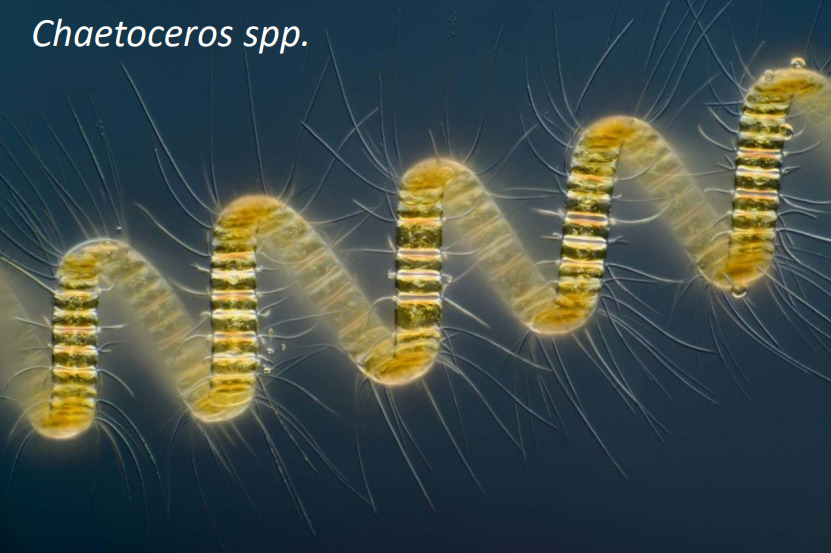
Following the ice bloom, a pelagic phytoplanktonic bloom occurs, in which we can find characteristic diatoms (such as Chaetoceros spp. illustrated in the photo above). Diatoms fix silica to make their glass shells, also called frustules. Thus, studying the concentration of biogenic silica provides an indicator of diatom biomass in the water column (Figure 3). As the cells age, they aggregate and are consumed by zooplankton, the export then takes place through the sedimentation of phyto-aggregates as well as through the emission of pellets.
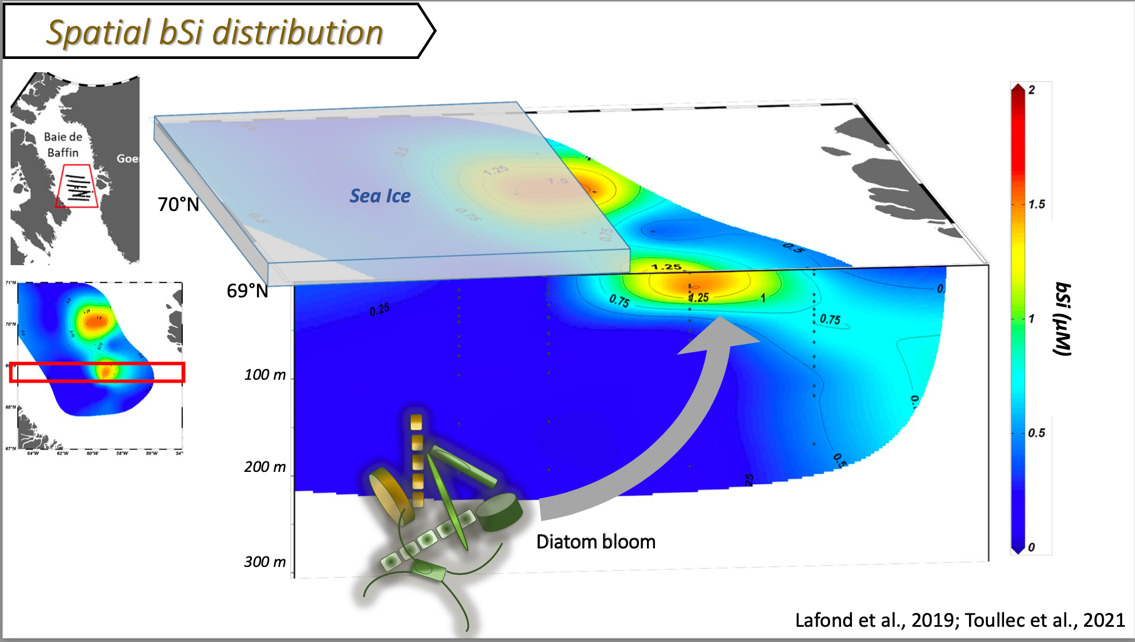
Figure 3 : Schematic spatial distribution of biogenic silica.
In order to observe the quantity and distribution of aggregates, a tool that can be attached to the rosette (flagship instrument of oceanography, see here for more details) is used: the Underwater Vision Profiler 5 (UVP5). It takes high resolution images of each object passing in front of the camera, from the surface to the bottom. These images are then sorted by an algorithm, allowing a qualitative and quantitative study of the zooplanktonic taxa present as well as the detrital particles along a vertical profile.
The zooplankton data obtained by UVP5 informs us about the community structure (biomasses, functional groups). We can observe the changes of zooplankton communities during the bloom, as well as with depth. Moreover, thanks to the imagery, it is possible to see the interaction between copepods and aggregates allowing to study the processes of aggregation formation and distribution of copepods (figure 4).
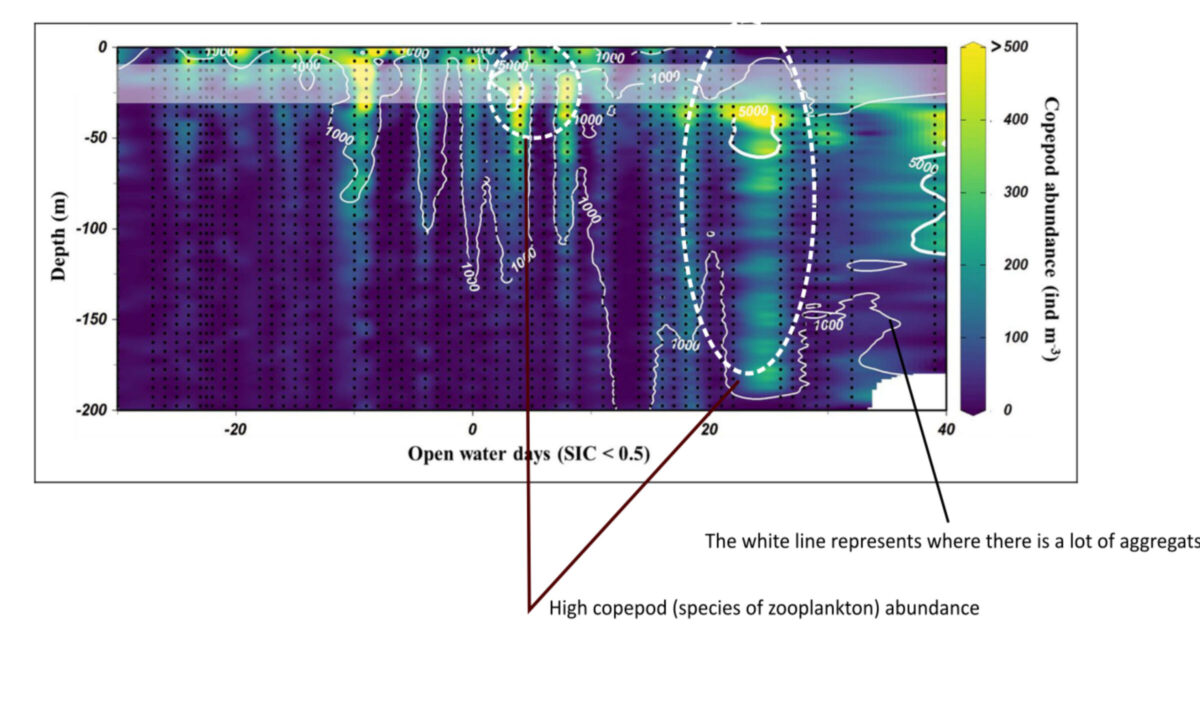
In his future research, Jordan wants to first estimate the total biomass, and then, from that, model the rate of respiration and CO2 production.
Bibliography:
Lafond, A., Leblanc, K., Quéguiner, B., Moriceau, B., Leynaert, A., Cornet, V., … & Tremblay, J. É. (2019). Late spring bloom development of pelagic diatoms in Baffin Bay. Elementa: Science of the Anthropocene, 7.
Toullec, J., Moriceau, B., Vincent, D., Guidi, L., Lafond, A., & Babin, M. (2021). Processes controlling aggregate formation and distribution during the Arctic phytoplankton spring bloom in Baffin Bay. Elem Sci Anth, 9(1), 00001.
 Attention, vous utilisez un navigateur peu sûr !
Attention, vous utilisez un navigateur peu sûr !